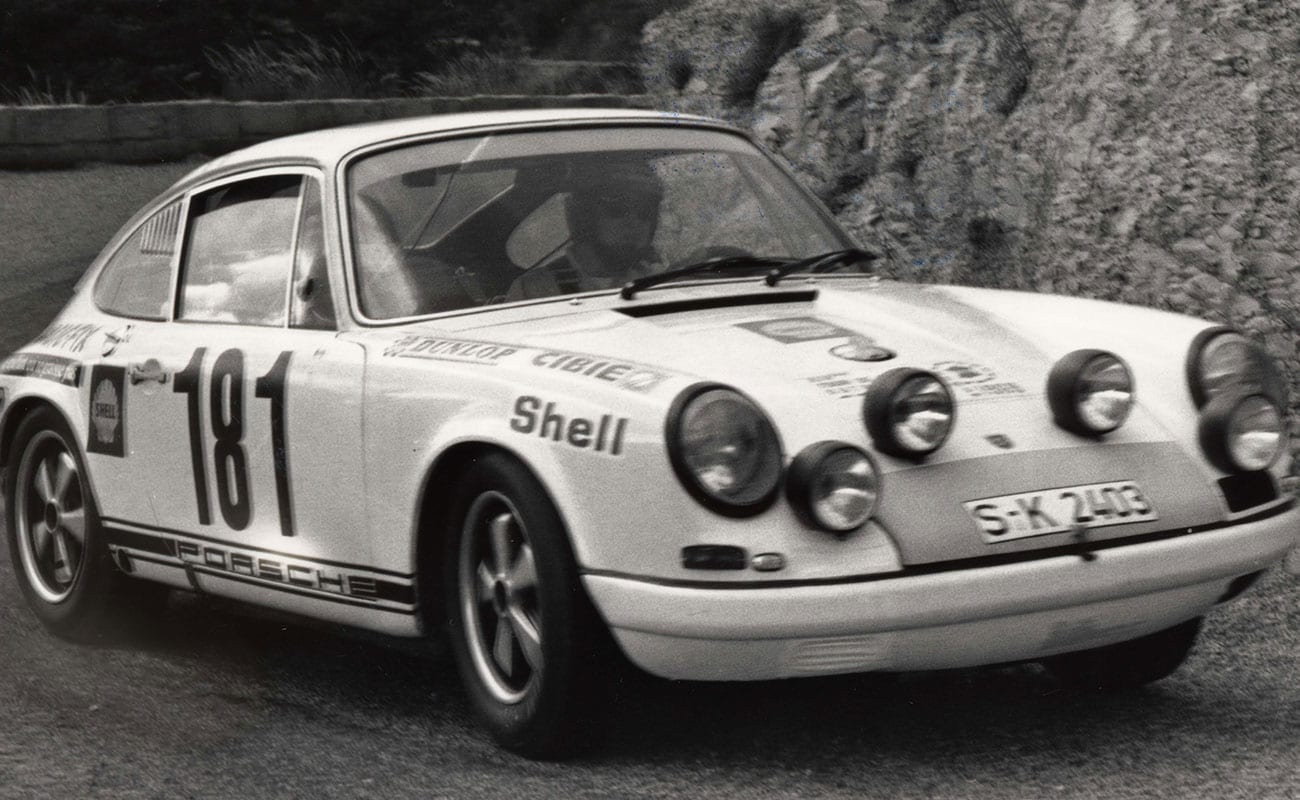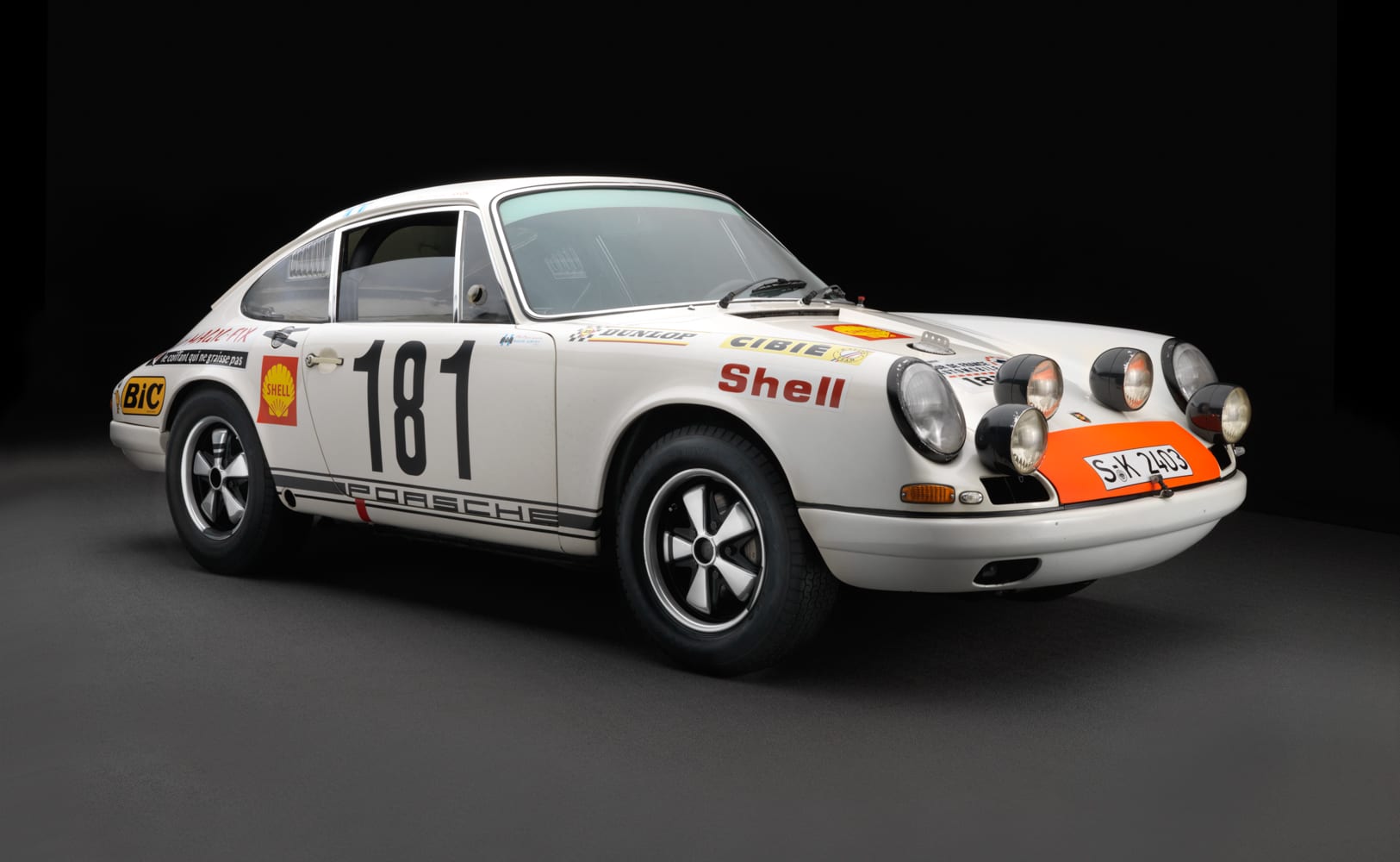Tech Specs
Flat-six air-cooled engine, rear mounted, single overhead camshaft, 1991 cc, 210 hp at 8000 rpm.
Before/After
1967 Porsche


About the 1967 Porsche 911R
Despite its innocuous appearance, this car represents Porsche’s only attempt at the homologation game. Mastered by the likes of Enzo Ferrari and Carlo Abarth, the game is almost uniquely Italian. Its object is to build a small number of radically fast racers that appear to be in compliance with GT class minimum production rules. Shuffling serial numbers or, more usually, claiming only minor (and hence legal) development of a production series, results in a car with prototype speed racing in the GT class. The GTO Ferrari is probably the most notorious example.
The competition success of the street 911S and the 911T had suggested the wisdom of an ultimate 911 weapon. Except for its steel unibody, the 911R body shell, built by Karl Baur, is 100% fiberglass. So thorough was Porsche’s weightsaving that the cars were even fitted with special oil tanks in front of the right rear wheel, ultra light taillight assemblies and front turn signals and, to paint the lily, epoxy plastic door handles unique to these cars which saved possibly a pound. With weight under control, Piëch specified the potent Carrera 6 powerplant. Wide (for the time) alloy wheels were fitted at all four quarters.
Porsche attempted to homologate the new car as a 911S variant, but with 50 more hp and at least 350 less pounds, the FIA wasn’t buying the story. Market research indicated that selling the 500 units now necessary for homologation couldn’t be done profitably, so the 20 911Rs thus far built (including four prototypes) were destined to finish their competition careers in non-production categories or as rally cars where homologation wasn’t necessary.
The car on display is the most successful 911R built. Victories by Gérard Larousse and Maurice Gelin in the 1969 Tour de France and the Tour of Corsica were fine additions to the Porsche competition record – if not exactly what the German factory had in mind when it tried to pen a chapter to the book the Italians wrote.
Photos – Peter Harholdt










